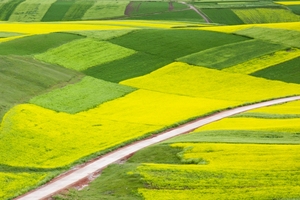The start of the year is a time both for reflection and looking forward. It is rather salutary that at the end of 2014 the farming press was full of articles about how to survive the current downturn in prices. In general, the advice is largely the generic views expressed in previous downturns but of course there are more thought provoking views expressed on the dairy and sugar beet industries.
 The piece of advice for combinable crops that I always view with some scepticism is that during a downturn in prices, farmers should take out of production those parts of the farm which do not have the prospect of turning a profit. I am not a business consultant but I am not sure that I fully agree. It all depends what is meant by a profit. Typically, even in the poorest yielding areas, the returns exceed the input costs i.e. there is a positive gross margin. It all gets a bit more complicated when the so-called fixed costs are also taken into consideration. I can see that where the income does not meet all costs that money is lost but I do wonder if fixed cost reductions, in line with reductions in cropped area, are easily achievable over the short term.
The piece of advice for combinable crops that I always view with some scepticism is that during a downturn in prices, farmers should take out of production those parts of the farm which do not have the prospect of turning a profit. I am not a business consultant but I am not sure that I fully agree. It all depends what is meant by a profit. Typically, even in the poorest yielding areas, the returns exceed the input costs i.e. there is a positive gross margin. It all gets a bit more complicated when the so-called fixed costs are also taken into consideration. I can see that where the income does not meet all costs that money is lost but I do wonder if fixed cost reductions, in line with reductions in cropped area, are easily achievable over the short term.
There are longer term issues that hang over the industry. In the 1990s MAFF and subsequently Defra had a penchant for funding studies on the impact of climate change on our agricultural industry. I suppose that they had a duty of care to the electorate so to do. On the other hand, nobody was quite sure of the likely extent and form of climate change and many, including me, thought the most sensible approach was simply to go to Toulouse (for instance) and observe the then current cropping and crop management practices. I must admit, again probably mistakenly, that I was relaxed about combinable crops because changing from say wheat to maize or oilseed rape to sunflowers required relatively small changes in farm infrastructure and machinery complement. In addition, the changes would happen fairly slowly, giving arable farmers time to adapt.
In the longer term, markets also alter due to changes in consumption patterns and international competitiveness. Last month at the AAB/BCPC conference on Crop Production in Southern Britain there was a fascinating paper by Simon Ward of Increment. His thesis was that the price of feed wheat was intrinsically linked to the maize price because they were both viewed simply as alternative energy sources for livestock. More controversially, he argued that oilseed rape and soya prices were linked, not necessarily because of their oil content but because of the value of their meal for livestock.
He then went on to argue that North European wheat yields are increasing at a slower rate than worldwide maize yields (even when the rapid rise in USA yields is excluded). On the other hand, North European oilseed rape yields are increasing at a higher rate than worldwide soya yields. The logical conclusion to this is that our feed wheat production will gradually become less competitive to maize and our oilseed rape production will become more competitive to soya. Logically this means that over the longer term we should be looking at growing less wheat and more oilseed rape. Naturally, Simon mentioned that there are a few reasons why such a change in cropping might not occur.
One of the caveats that he mentioned, and also one that undermines my 1990s relaxed view on the likely impact of climate change on combinable crop production in the UK, is that we now have less technical flexibility to sustain changes in the areas devoted to particular crops on the farm. This is due to those twin threats of pesticide resistance and pesticide regulation. In particular, the Water Framework Directive threatens the potential area of oilseed rape that can be grown because the resistance in black-grass to the ‘fops’ and ‘dims’ has resulted in our current reliance on carbetamide (e.g. Crawler) and propyzamide (e.g. Kerb). These, along with metaldehyde, are again appearing in raw water this winter at levels above that specified in the Drinking Water Directive. The current two year ban on neonicitinoid seed dressings has already significantly decreased the possibility of the effective control of flea beetle in the oilseed rape crop. Such a reduction in the ability to adapt farm systems to future markets and weather patterns is not a good place for the industry to find itself in when planning for the future.
